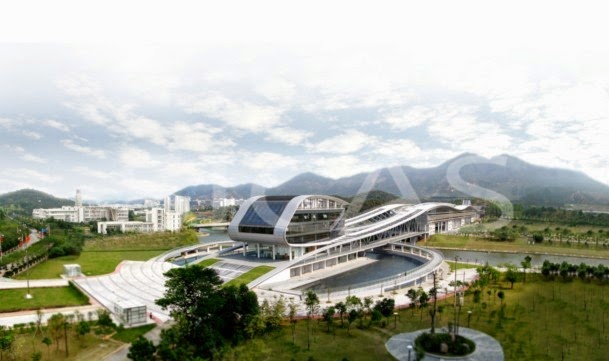Ancient Qingdao
Qingdao is the birthplace of Taoism with a long history which dates back about 6,000 years ago with human settlement in the New Stone Age. The Dongyi nationality, one of the important origins of the Chinese nation, lived here and created the Dawenkou, Longshan and Dongyeshi cultures. By the end of the Qing Dynasty (1644- 1911), Qingdao had grown into a prosperous town which was previously called Jiao’ao.
Qingdao is the birthplace of Taoism with a long history which dates back about 6,000 years ago with human settlement in the New Stone Age. The Dongyi nationality, one of the important origins of the Chinese nation, lived here and created the Dawenkou, Longshan and Dongyeshi cultures. By the end of the Qing Dynasty (1644- 1911), Qingdao had grown into a prosperous town which was previously called Jiao’ao.
Qingdao University.
German Occupation
From 1898 to 1914, Kiautschou Bay was taken as part of the Imperial German Concession with Qingdao as its administrative center. The concession treaty was signed on 6 March 1899, for a 99-year lease.
Japanese Occupation
When the First World War broke out in 1914, as the ally with the British against the Germans, Japan took over Qingdao. After the war, the Japanese wanted to continue to hold the city for the remainder of the German lease, and Chinese government then yielded to Japanese pressure. Therefore, the patriotic students in Beijing launched the May 4th Movement of 1919 and demanded the resumption of sovereignty over Qingdao. On December 10, 1922, the Northern Lords government regained control of Qingdao. However, Japan re-occupied Qingdao in 1938 with its plans of territorial expansion onto China's coast, which lasted to an end in September 1945.
Liberation & Development
Qingdao was finally liberated on June 2nd, 1949 by the CCP's Red Army and has been under the control of the P.R.C. ever since. Since the 1984 inauguration of China's open-door policy to foreign trade and investment, western Qingdao developed quickly as a port city. It is now the headquarters of the Chinese navy's northern fleet. In 1994, Qingdao was included in the country’s 15-vice-provincial-level-city list. In 2008, it hosted the sailing events of the 2008 Summer Olympics in Beijing.
Study in China.
On City Development
German occupation influenced Qingdao a lot, which used to be a small fishing village. Upon gaining control of the area, the Germans equipped the poor place with wide streets, solid housing areas, government buildings, electrification throughout, a sewer system and a safe drinking water supply, a rarity in large parts of Asia at that time and later. The area had the highest school density and the highest per capita student enrollment in all of China, with primary, secondary and vocational schools funded by the Imperial German treasury and Protestant and Roman Catholic missions. Commercial interests established the Germania Brewery in 1903, which later became the world-famous Qingdao Brewery. German influence extended to other areas of Shandong Province, including the establishment of diverse
MBBS in China.
Also, the Germans left a distinct mark on Tsingtao's architecture inevitably during the colonial period that can still be seen in its historic center and train station. Many German-period buildings have been well preserved as heritage monuments, including Baroque architectures, Ancient Roman architectures, Romantic architectures, Eclecticism architectures, Renaissance architectures, and especially Gothic architectures. German style of red tiles and yellow walls replaced the Chinese traditional style of blue bricks and grey tiles. Now, although the new city area is under large-scale reconstruction, the old city area (especially Taixi) still retains some traditional buildings. Qingdao's Old Town located in the German concession area is rich in European buildings. The mixture of historical sites and attractions in the old Qingdao city indicates the city's diverse international cultures. Guangxi Lu (aka Prince Henry Road), the heart of Old Qingdao, provides tourists a unique view of European culture in Qingdao. The Governor's Residence and the old campus of Ocean University provide an insight into the city’s colonial past




